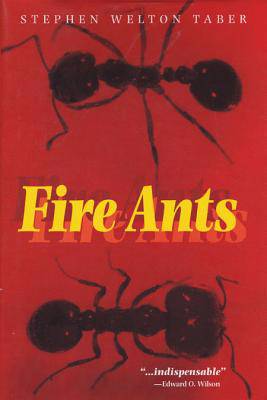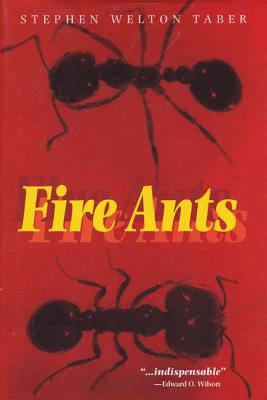
- Retrait gratuit dans votre magasin Club
- 7.000.000 titres dans notre catalogue
- Payer en toute sécurité
- Toujours un magasin près de chez vous
- Retrait gratuit dans votre magasin Club
- 7.000.0000 titres dans notre catalogue
- Payer en toute sécurité
- Toujours un magasin près de chez vous
45,95 €
+ 91 points
Description
In the early years of the twentieth century, South American fire ants crossed the Caribbean and invaded the shores of the southeastern United States. These imported fire ants quickly found a niche in Gulf Coast fields and lawns, overpowered the native species, and began spreading. In the process they became a notorious pest to some, a beneficial ally to others, and a potential killer to allergy sufferers. As a result, they are among the most intensely studied insects in the world. Near the turn of the millennium the dominant species, the red imported fire ant, finally made its long-feared leap across the hostile western desert into the greener oasis of southern California, where it stood poised to infest the richest agricultural region in the country.In this authoritative book, five economically important species take center stage. These are the red imported fire ant, the black imported fire ant, the tropical fire ant, the southern fire ant, and the golden fire ant. A general introduction and a history of their invasion of North America open the door to additional chapters on natural history, origin and evolution, animals that share the fire ants' nest, the mixed successes of chemical control, and natural enemies and the hopes for biocontrol. Also examined are the pros and cons of fire ants, their medical importance, and suggestions for future research. The appendices list all known fire ant species and explain how to prepare, preserve, and identify every known species occurring in the United States.Well written and enhanced by an extensive glossary, a thorough bibliography of scientific literature, and more than one hundred photos, maps, and drawings, Fire Ants engages and informs both nonprofessionals and specialists.
Spécifications
Parties prenantes
- Auteur(s) :
- Editeur:
Contenu
- Nombre de pages :
- 328
- Langue:
- Anglais
- Collection :
- Tome:
- n° 3
Caractéristiques
- EAN:
- 9780890969458
- Date de parution :
- 01-08-00
- Format:
- Livre relié
- Format numérique:
- Genaaid
- Dimensions :
- 165 mm x 245 mm
- Poids :
- 766 g

Les avis
Nous publions uniquement les avis qui respectent les conditions requises. Consultez nos conditions pour les avis.






